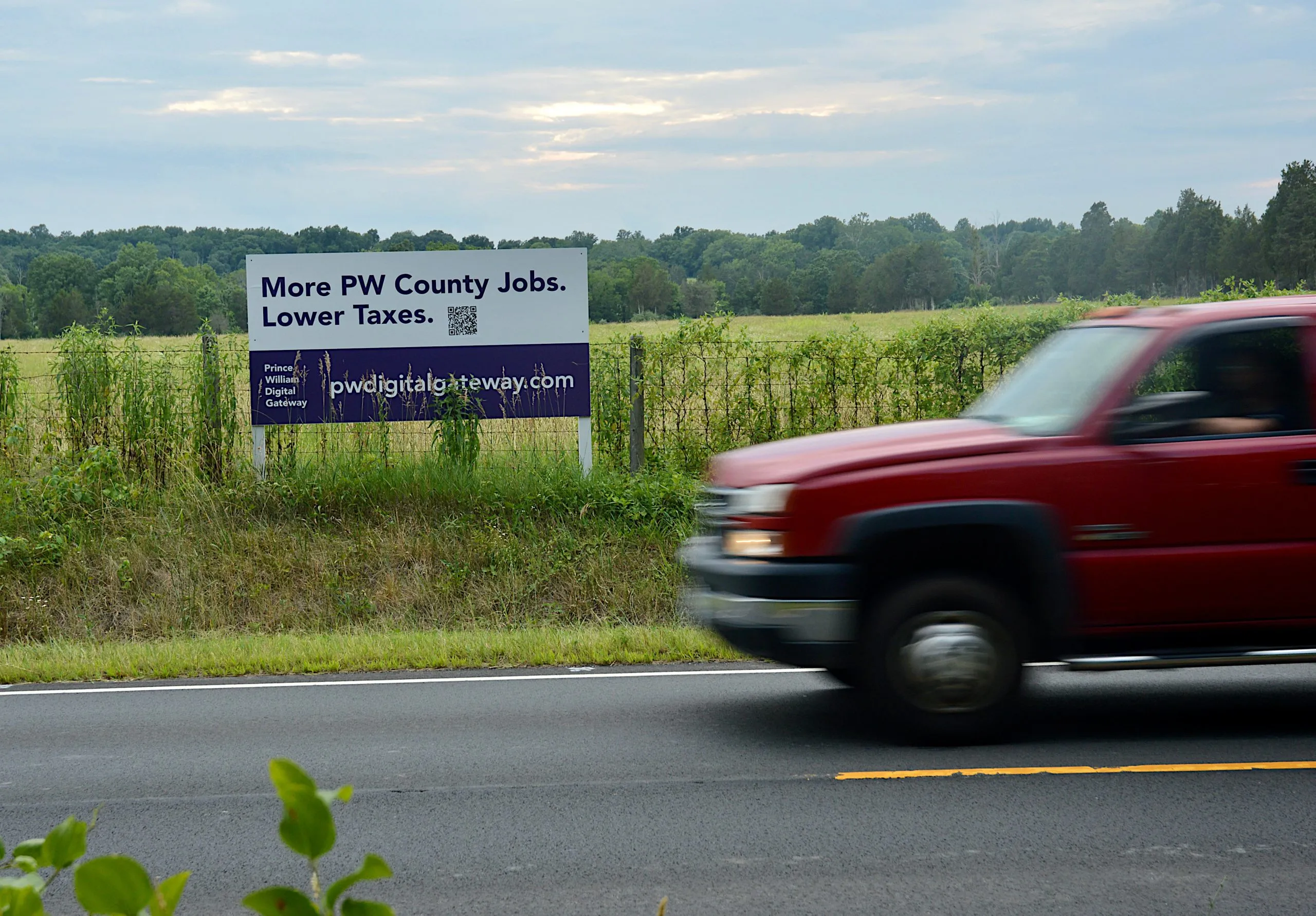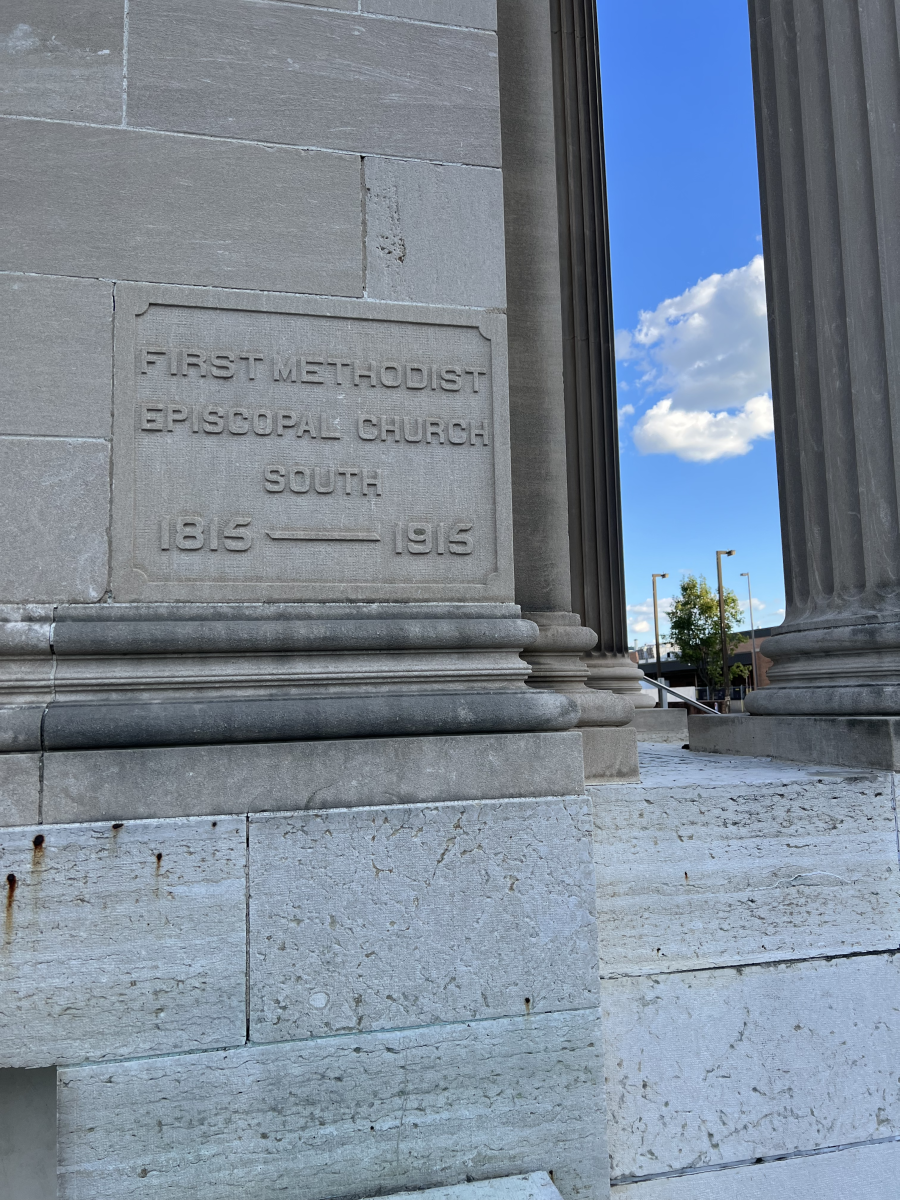Prince William County conservationists had hoped a hitch in powering data centers in an adjacent metro D.C. county might doom dreams of an expansion there, but Dominion Energy says the grid is ready to accommodate growth.
This is the second in a two-part series, read the first installment here.
MANASSAS, Va. – When Dominion Energy warned Loudoun County authorities this summer that a power crunch would likely impede the flow of electricity to their newest data center buildout in northern Virginia, the news re-energized organizer Elena Schlossberg.
Schlossberg is at the forefront of a protracted campaign to stop neighboring Prince William County from following through on a vision to compete with Loudoun as the data center mecca of northern Virginia.
She figured complications with high-voltage transmission lines serving eastern Loudoun would aid her cause by also stymieing a set of proposals in Prince William County to welcome data center development in part of its “rural crescent,” including an area next to a treasured Civil War battlefield.
But those assumptions about Prince William are off the mark, Dominion spokesman Aaron Ruby told the Energy News Network. The utility, which is tracking the debate, doesn’t foresee similar hitches in powering Prince William.
Whether data centers and other landscape-altering developments come to fruition in Prince William is a topic now festering at a full boil after simmering for months. Conservationists maintain the county has already dedicated industrially zoned acreage to commercial development and shouldn’t impinge on cultural and natural landmarks preservationists are fierce about protecting.
However, transmission constraints in Loudoun County won’t have an impact on data center growth in Prince William, Ruby said, nor will it affect existing service for residential, business or government customers.
“We’ve developed a number of transmission projects in the last few years to serve data center growth in (Prince William),” he said.
Ruby also noted that the Haymarket line, the Warrenton-Wheeler-Gainesville line and several other transmission lines and substations are within an 8,700-acre district that Prince William defines as its data center opportunity zone overlay.
Soon, he added, the utility will be building the Cannon Branch-Winters Branch transmission line and a new substation, Wakeman, east of the airport in Manassas.
While Dominion expects to need new transmission lines and substations to power the county’s proposed 2,139-acre Digital Gateway expansion, Ruby said it’s too early to calculate those specifics.
“We’re following it closely,” Ruby said about a series of development plans Prince William government officials are set to vote on soon. “Once we better understand the size, location and timing of the development, we’ll be able to determine what transmission infrastructure will be needed.”
Whatever the particulars become, he said Dominion is confident the grid can handle both data center growth and rising renewables without compromising reliability in Prince William.
Under the 2020 Virginia Clean Economy Act, the Richmond-based investor-owned utility is tasked with generating 100% carbon-free electricity by 2045.
Despite those assurances from Dominion, Sierra Club volunteer Ann Bennett said she was pleased to hear two Prince William planning commissioners querying government officials about how the Digital Gateway seems to be on a glide path when so much else is at stake with the bevy of concurrent plans and proposals the county is juggling.
Bennett focuses on climate and energy issues with the Great Falls Group of the club’s Virginia chapter. Her organization is a key piece of the local conservation alliance trying to limit data center development to the opportunity zone overlay, acreage already designated for commercial activities.
As well, the alliance supports several ideas the pair of commissioners raised during a lengthy July 20 work session. One is a comprehensive study of specific electricity infrastructure needs and another is an analysis of the impact of that buildout on Prince William ratepayers.
“We agree … that the public should have an understanding of future infrastructure needs, where the grid construction is likely to occur, the costs of new infrastructure and impacts to carbon emissions,” Bennett wrote in a July 30 letter to the commission.
‘The community should have a say’
Schlossberg’s disputes with utilities are nothing new. She launched the Coalition to Protect Prince William County eight years ago to prevent Dominion from installing a 5.2-mile overhead transmission line through the Haymarket and Gainesville communities to power an Amazon data center.
Her group prevailed in 2018 when state utility regulators agreed that 3.1 miles of the line should be buried along Interstate 66.
This time around, she is fuming that her home county government is opting to reap revenue by committing what she calls an environmental double whammy that defies every principle of smart growth.
“Right now, Ann Wheeler is the Pied Piper who is leading us all off a cliff,” said Schlossberg, referring to the elected county official who has proposed expanding data center development. “We’re trying to slow that march down so we can educate the community.”
Wheeler, who chairs the county board of supervisors, didn’t have a direct response to Schlossberg’s comment other than to note that residents are entitled to speak their minds about any and all county issues because that’s part of the government process.
She is one of two board supervisors citizens are attempting to remove from office.
Wheeler spelled out her data center vision for Prince William since rising to her leadership position in January 2020. She set off an uproar in this county of 484,000 people by laying out a plan for the commercial and industrial sectors to relieve the tax burden on residents.
The county — whose population has grown 19% since 2010 — is in the midst of designing its first climate action plan because it’s woefully behind on its November 2020 commitment to curtail emissions of heat-trapping gases. That plan is supposed to provide a blueprint for the county’s carbon future when it’s released next July. But environmentalists fear mammoth developments county officials and supervisors are reviewing right now could jeopardize Prince William’s ambitious carbon-slashing targets.
Even before Loudoun’s power woes came to light, Schlossberg’s watchdog group had questioned how Dominion could provide enough juice, whether from fossil fuel or renewable energy, for up to 27 million square feet of commercial development Prince William is courting for the Digital Gateway alone.
It annoys Schlossberg that government officials want to mar an ecological treasure christened the “rural crescent” with data centers and utility infrastructure.
In a prescient move, supervisors set the green arc aside in 1998 when suburbanization was already consuming a county just 36 car miles from the nation’s capital. The idea was to allow wildlife and flora to thrive among 117,000 acres where development is limited to farms and homes on 10-acre lots.
“(Board supervisors) are saying rules and process be damned, we are going to get this done by any means possible,” Schlossberg said.
“The community should have a say. (Supervisors) are just giving lip service to real sustainability.”
Wheeler countered that Prince William’s progress toward a greener 21st century is far and wide. She pointed to a list of actions, including the decision to infuse a previously unfunded sustainability program with $1 million.
“The majority on this board is committed to a more sustainable future and this county is moving forward,” Wheeler said.
Schlossberg also criticized the newest version of the county’s comprehensive plan now under review, noting it doesn’t address public transportation.
Plus, data center development will require new and wider roads that attract more traffic and pollution, she noted. Transportation in all forms contributed to 38% of Prince William’s carbon emissions in 2018.

‘Fifth Battle of Manassas’
One of the high-voltage transmission lines that Schlossberg so detests already looms along the western edge of Manassas National Battlefield Park in Prince William County.
In its shadow, on a sunbaked field near where upward of 22,000 Confederate and Union soldiers were killed, wounded or went missing 160 summers ago, Kyle Hart pauses to catch his breath.
It’s not the gentle climb in the heat that winded him. Instead, it’s the potential for even more scarring of what’s now mostly a picturesque agricultural landscape.
He still can’t fathom how jarring it will be for visitors tracing the August 1862 Second Battle of Manassas to look at — and likely hear — swaths of humming data centers just beyond the Civil War battlefield.
Central to Hart’s work as the Mid-Atlantic field representative for the National Parks Conservation Association is protecting the hallowed ground intractably woven into America’s bloody evolution.
“Some of our nation’s darkest hours happened right here,” he said. “That’s why we want some sort of separation so the area feels like it did in the 1860s.
“When thinking what we want it to look like in 50 or 100 years, I’d hate for it to be data centers. The scale they’re talking about is huge, huge, huge.”
Hart’s back-of-the-envelope math reveals development enormous enough to fill four-plus Pentagons.
It’s little wonder Preservation Virginia named the Manassas battlefield to this year’s list of the state’s 11 most endangered places, Hart said.
“Locating data centers within technology corridors and away from culturally sensitive areas would convey how local governments value and support the preservation of their irreplaceable historic resources,” the advocacy organization wrote in a May news release.
Bennett joined Hart for the short hike to the edge of the battlefield facing the potential Digital Gateway off Pageland Lane.
“This is a national park,” said Bennett, the Sierran who is a native of adjacent Fairfax County and grew up visiting the battlefield. “This kind of development would never happen if this was the Tetons, Rocky Mountain or other signature parks.”
It’s not just the battlefield that’s under threat from development, she said. The boundaries of Prince William National Forest and Conway-Robinson Memorial State Forest are also nearby.
Bennett is perplexed why Prince William seems intent on squandering an opportunity to maximize outdoor resources and tourist destinations that are the envy of abutting counties.
“This is the fifth battle of Manassas,” she stated.
The initial clash – the July 1861 Battle of First Manassas – unfolded just a few miles from where Hart and Bennett stood. Considered the first major clash of the Civil War, it’s where Confederate Gen. Thomas Jackson was given the nickname Stonewall for refusing to yield to Union troops.
Fast forward to the 20th century for skirmishes three and four, which didn’t pit North against South. In the late 1980s, preservationists halted a shopping mall and then organized a campaign in the early 1990s to thwart a Disney theme park.
“It’s amazing that we came through those two fights,” said Bennett, who earned a master’s degree in environmental policy. “And now we’re dealing with these data centers.”
The tradeoff, in a county struggling to control its carbon emissions, just doesn’t seem logical, she said.
“This land is worth saving. This is the largest environmental threat, writ large, in the region.”
This article first appeared on Energy News Network and is republished here under a Creative Commons license.![]()



